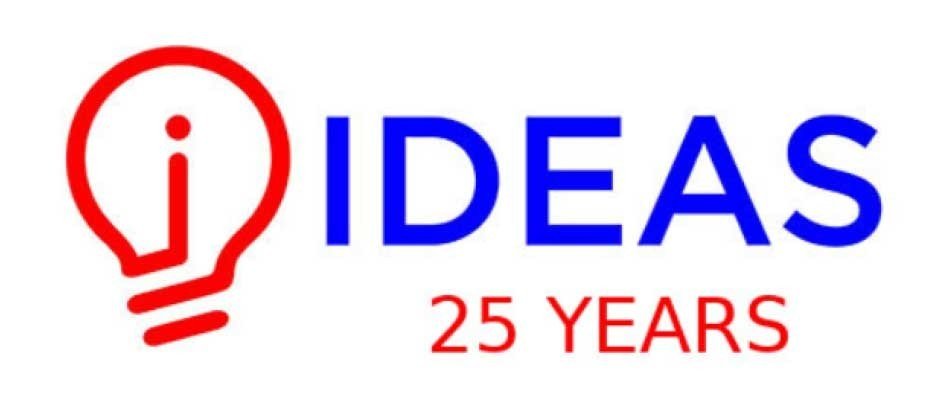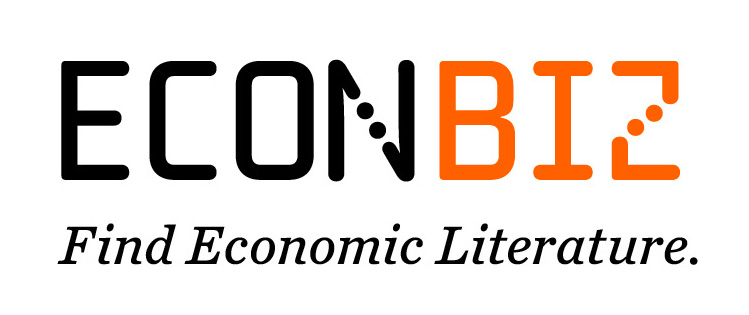| ISSN | 2615-9813 |
| ISSN (số cũ) | 1859-3682 |
Số 229 | Tháng 4/2025
Tài sản thương hiệu dựa trên nhân viên của các trường đại học: Vai trò điều tiết của vốn tâm lý tích cực
Nguyễn Thanh Hoàng, Nguyễn Thanh Hiếu
Tóm tắt:
Trong bối cảnh cạnh tranh của giáo dục đại học, tài sản thương hiệu dựa trên nhân viên (GTNV) đã nổi lên như một yếu tố quan trọng trong việc thúc đẩy tính bền vững và khả năng cạnh tranh của trường. Nghiên cứu này điều tra các mối quan hệ giữa lãnh đạo chuyển đổi (PCLD), văn hóa tổ chức (VHTC), sự rõ ràng về vai trò (VTRR) của nhân viên, cam kết thương hiệu (CKTH) và GTNV, tập trung vào vai trò điều tiết của vốn tâm lý tích cực (TLTC). Dữ liệu được thu thập từ 385 giảng viên và nhân viên tại các trường đại học tại Thành phố Hồ Chí Minh và được phân tích bằng phương pháp mô hình phương trình cấu trúc bình phương nhỏ nhất từng phần (PLS-SEM). Những phát hiện chính chỉ ra rằng VTRR của nhân viên làm trung gian đáng kể cho tác động của VHTC và sự PCLD đối với GTNV. Tương tự, CKTH được cho là có ảnh hưởng tích cực đến tài sản thương hiệu của nhân viên và làm trung gian cho những tác động của sự PCLD và VHTC. VHTC mạnh mẽ nâng cao sự rõ ràng và cam kết của vai trò nhân viên. PCLD có tác động cùng chiều đến VTRR của nhân viên và cam kết với thương hiệu. Đặc biệt, nghiên cứu còn tìm hiểu vai trò điều tiết của TLTC. Kết quả cho thấy vốn tâm lý tăng cường ảnh hưởng của VHTC đến VTRR, cùng sự PCLD đối với VTRR và CKTH. Nghiên cứu này góp phần thúc đẩy những tiến bộ về mặt lý thuyết, đồng thời cung cấp những hiểu biết thực tế để cải thiện chiến lược quản lý trường đại học và phát triển thương hiệu.
Tài liệu tham khảo:
- Aferi, A., Amali Rivai, H., & Lukito, H. (2023). The effect of transformational leadership style on organizational commitment, employee engagement, and employee performance at Pt. Pln (Persero) Up3 Bukittinggi. Journal of Economics, Finance and Management Studies, 06(05), 135-142.
- Aftab, N., Rashid, S., & Ali Shah, S. A. (2018). Direct effect of extraversion and conscientiousness with interactive effect of positive psychological capital on organizational citizenship behavior among university teachers. Cogent Psychology, 5(1), 1514961.
- Allen, J. N., & Meyer, J. P. (1991). The measurement and antecedents of affective, continuance and nor mative commitment to the organization. Journal of Occupational Psychology, 63, 1-18.
- Allen, N. J., & Meyer, J. P. (1997). Affective, continuance, and normative commitment to the organiza tion: An examination of construct validity. Journal of Vocational Behavior, 49(3), 252-276.
- Altaf, M., Saleem, I., Mustafa, F., & Anwar, F. (2022). The buy-in benchmark in Islamic banking: Combined effect of brand role clarity and employee brand commitment towards employee brand equity. Journal of Islamic Marketing, 13(10), 2028-2046.
- Anderson, M. (2017). Transformational leadership in education: A review of existing literature. International Social Science Review, 93(1), 1-13.
- Aranki, D. H., Suifan, T. S., & Sweis, R. J. (2019). The relationship between organizational culture and organizational commitment. Modern Applied Science, 13(4), 137-154.
- Avolio, B. J., Bass, B. M., & Jung, D. I. (1999). Re‐examining the components of transformational and transactional leadership using the Multifactor Leadership. Journal of occupational and organizational psychology, 72(4), 441-462.
- Awan, M. A., Mumtaz, T., Li, X., & Wang, H. (2018). The impact of employee brand commitment on employee based brand equity: A case of banking sector. Cogent Business & Management, 5(1), 1-18.
- Bandura, A. (1991). Social cognitive theory of self-regulation. Organizational behavior and human decision processes, 50(2), 248-287.
- Baig, S. A., Iqbal, S., Abrar, M., Baig, I. A., Amjad, F., Zia-ur-Rehman, M., & Awan, M. U. (2021). Impact of leadership styles on employees’ performance with moderating role of positive psychological capital. Total Quality Management & Business Excellence, 32(9-10), 1085-1105.
- Baumgarth, C., & Schmidt, M. (2010). How strong is the business-to-business brand in the workforce? An empirically-tested model of ‘internal brand equity’in a business-to-business setting. Industrial Marketing Management, 39(8), 1250-1260.
- Bass, B. M., Avolio, B. J. (1995). MLQ Multifactor Leadership Questionnaire (Form 5x–Short). Mind Garden, Redwood City, CA.
- Boukis, A., & Christodoulides, G. (2020). Investigating key antecedents and outcomes of employee‐based brand equity. European Management Review, 17(1), 41-55.
- Cameron, K.S. & Quinn, R.E. (1999). Diagnosing and Changing Organizational Culture: Based on The Competing Values Framework. Reading, MA: Addison-Wesley.
- Chen, J., Ghardallou, W., Comite, U., Ahmad, N., Ryu, H. B., Ariza-Montes, A., & Han, H. (2022). Managing hospital employees’ burnout through transformational leadership: the role of resilience, role clarity, and intrinsic motivation. International journal of environmental research and public health, 19(17), 10941.
- Cieciora, M., Pietrzak, P., Dębski, M., Kandefer, K., & Bołkunow, W. (2021). Differences in the Perception of Organizational Culture in Non-Public Universities in Poland by Academic and Administrative Staff–A Study Based on Cameron & Quinn's Model. Foundations of Management, 13(1), 131-144. Doi: https://doi.org/10.2478/fman-2021-0010
- Cavazotte, F., Moreno, V., & Bernardo, J. (2013). Transformational leaders and work performance: the mediating roles of identification and self-efficacy. BAR-Brazilian Administration Review, 10(4), 490-512.
- Dębski, M., Cieciora, M., Pietrzak, P., & Bołkunow, W. (2020). Organizational culture in public and non-public higher education institutions in Poland: A study based on Cameron & Quinn’s model. Human Systems Management, 39(3), 345-355.
- Duyen, N. T. N., & Tuan, N. M. (2020). Factors Influencing Employee-Based Brand Equity of Vietnamese Commercial Banks. Industry and Trade Journal, December 2020.
- Dunmore, M., (2002), Inside-out Marketing: How to Create an Internal Marketing Strategy, Kogan Page Limited, London
- Flatau-Harrison, H., Griffin, M. A., & Gagne, M. (2020). Trickling down: The impact of leaders on individual role clarity through safety climate strength across time. Safety science, 121, 485-495.
- Judge, T. A., Erez, A., & Bono, J. E. (1998). The power of being positive: The relationship between positive self-concept and job performance. Human Performance, 11, 167-18
- Imran, R., Shabbir, M. S., & Mahmood, A. (2020). High Performance Work System: An Important Link Between Transformational Leadership and Job Performance. Polish Journal of Management Studies, 22(1), 217-230.
- King, C., & Grace, D. (2009). Employee based brand equity: A third perspective. Services Marketing Quarterly, 30(2), 122-147.
- King, C., & Grace, D. (2010). Building and measuring employee‐based brand equity. European Journal of Marketing.
- Kwon, Y. (2013). The Influence of Employee-Based Brand Equity on the Health Supportive Environment and Culture–Organizational Citizenship Behavior Relation (Doctoral dissertation).
- Hair, J.F., Sarstedt, M., Hopkins, L. and Kuppelwieser, V.G. (2014). Partial least squares structural equation modeling (PLS-SEM): an emerging tool in business research. European Business Review, 26(2), 106-121.
- Hobfoll, S. E. (1989). Conservation of resources: a new attempt at conceptualizing stress. American psychologist, 44(3), 513.
- Hobfoll, S. E. (2001). The influence of culture, community, and the nested‐self in the stress process: Advancing conservation of resources theory. Applied psychology, 50(3), 337-421.
- Hussain, A., Khan, M. A., Hussain, J., & Khan, M. H. (2020). Nexus of Transformational Leadership and Employees’ Job Performance in Telecom Sector Pakistan. Journal of Business and Social Review in Emerging Economies, 6(2), 799-806.
- Lorenz, T., Beer, C., Pütz, J., & Heinitz, K. (2016). Measuring psychological capital: Construction and validation of the compound PsyCap scale (CPC-12). PloS One, 11(4), e0152892.
- Luthans, F., Youssef, C. M., & Avolio, B. J. (2007). Psychological capital: Investing and developing positive organizational behavior. Positive organizational behavior, 1(2), 9-24.
- Mandagie, W., & Rana, J. (2023). Creating employee-based brand equity through integrated marketing communication and social media adoption: Indonesian private universities. International Journal of Data and Network Science, 7(2), 707-716. Doi: 10.5267/j.ijdns.2023.3.001
- Marisya, F., Mayasari, V., Astuti, S. D., & Purwanto, M. B. (2023). Implementation of Leadership Ethics and Transformational Leadership in Employee Performance. Asian Journal of Applied Business and Management, 2(4), 545-556.
- Ngo, T. T. (2021). Impact of psychological capital on job performance and job satisfaction: A case study in Vietnam. The Journal of Asian Finance, Economics and Business, 8(5), 495-503.
- Paramita, E., Lumbanraja, P., & Absah, Y. (2020). The influence of organizational culture and organizational commitment on employee performance and job satisfaction as a moderating variable at PT. Bank Mandiri (Persero), Tbk. International Journal of Research and Review, 7(3), 273-286.
- Piehler, R., Hanisch, S., & Burmann, C. (2015). Internal Branding—Relevance, Management and Challenges. Marketing Review St. Gallen, 32(1): 52-60.
- Peng, J., Li, M., Wang, Z., & Lin, Y. (2021). Transformational leadership and employees’ reactions to organizational change: evidence from a meta-analysis. The Journal of applied behavioral science, 57(3), 369-397.
- Recardo, R. & Jolly, J. (1997). Organizational Culture and Teams. SAM Advanced Management Journal, 62, 4-7.
- Sousa, B., & Ferreira, P. (2024). Employee based brand equity: a systematic review of literature, framework development, and implications for future research. Journal of Management History, 30(3), 475-492.
- Shukla, A., & Rai, H. (2015). Linking perceived organizational support to organizational trust and commitment: Moderating role of psychological capital. Global Business Review, 16(6), 981-996.
- Suharti, L., & Suliyanto, D. (2012). The effects of organizational culture and leadership style toward employee engagement and their impacts toward employee loyalty.
- Syakur, A., Susilo, T. A. B., Wike, W., & Ahmadi, R. (2020). Sustainability of communication, organizational culture, cooperation, trust and leadership style for lecturer commitments in higher education. Budapest International Research and Critics Institute (BIRCI-Journal): Humanities and Social Sciences, 3(2), 1325-1335.
- Trung, N. T. (2015). Factors Influencing Employees' Brand Supporting Behavior in Higher Education: Empirical Evidence from the University of Economics Ho Chi Minh City. Journal of Economic Development, 26(6), 134-152.
- Wang, G., Oh, I. S., Courtright, S. H., & Colbert, A. E. (2011). Transformational leadership and performance across criteria and levels: A meta-analytic review of 25 years of research. Group & organization management, 36(2), 223-270.
- Zhu, C., & Mu, R. (2016). Followers’ innovative behavior in organizations: the role of transformational leadership, psychological capital and knowledge sharing. Frontiers of Business Research in China, 10(4), 636-663.
Employee-Based Brand Equity of Universities: The Moderating Role of Positive Psychological Capital
Abstract:
In the increasingly competitive landscape of higher education, employee-based brand equity (EBBE) has become a pivotal factor for promoting institutional sustainability and competitiveness. This study examines the relationships among transformational leadership, organizational culture, employees' role clarity, brand commitment, and EBBE, with a particular focus on the moderating role of positive psychological capital. Data were collected from 385 faculty members and staff at universities in Ho Chi Minh City and analyzed using partial least squares structural equation modeling (PLS-SEM). The findings reveal that employees' role clarity significantly mediates the effects of both organizational culture and transformational leadership on EBBE. Similarly, brand commitment positively influences EBBE and mediates the impact of transformational leadership and organizational culture. A strong organizational culture enhances both employees’ role clarity and brand commitment, while transformational leadership positively affects these outcomes as well. Notably, positive psychological capital moderates these relationships, strengthening the effect of organizational culture on role clarity and enhancing the effects of transformational leadership on both role clarity and brand commitment. This study advances theoretical understanding and provides practical insights for enhancing university management and brand development strategies.







